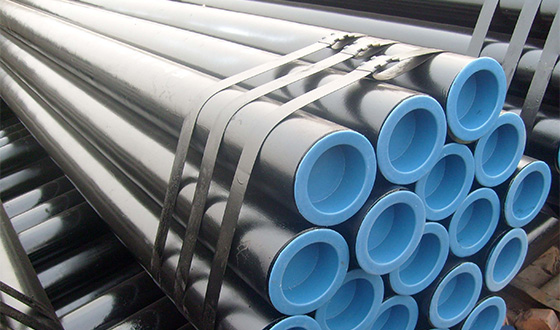-
Cangzhou Yulong Steel Co., Ltd.
-
Phone:
+86 13303177267 -
Email:
admin@ylsteelfittings.com
- English
- Arabic
- Italian
- Spanish
- Portuguese
- German
- kazakh
- Persian
- Greek
- French
- Russian
- Polish
- Thai
- Indonesian
- Vietnamese
- Zulu
- Korean
- Uzbek
- Hindi
- Serbian
- Malay
- Ukrainian
- Gujarati
- Haitian Creole
- hausa
- hawaiian
- Hebrew
- Miao
- Hungarian
- Icelandic
- igbo
- irish
- Japanese
- Javanese
- Kannada
- Khmer
- Rwandese
- Afrikaans
- Albanian
- Amharic
- Armenian
- Azerbaijani
- Basque
- Belarusian
- Bengali
- Bosnian
- Bulgarian
- Catalan
- Cebuano
- China
- China (Taiwan)
- Corsican
- Croatian
- Czech
- Danish
- Esperanto
- Estonian
- Finnish
- Frisian
- Galician
- Georgian
- Kurdish
- Kyrgyz
- Lao
- Latin
- Latvian
- Lithuanian
- Luxembourgish
- Macedonian
- Malgashi
- Malayalam
- Maltese
- Maori
- Marathi
- Mongolian
- Myanmar
- Nepali
- Norwegian
- Norwegian
- Occitan
- Pashto
- Dutch
- Punjabi
- Romanian
- Samoan
- Scottish Gaelic
- Sesotho
- Shona
- Sindhi
- Sinhala
- Slovak
- Slovenian
- Somali
- Sundanese
- Swahili
- Swedish
- Tagalog
- Tajik
- Tamil
- Tatar
- Telugu
- Turkish
- Turkmen
- Urdu
- Uighur
- Welsh
- Bantu
- Yiddish
- Yoruba

Dec . 04, 2024 18:38 Back to list
90 degree and 45 degree elbow
Understanding 90-Degree and 45-Degree Elbows in Piping Systems
In the realm of piping systems, elbows are critical components that allow pipes to change direction, thus facilitating the flow of liquids and gases. Among the various types of elbows, the 90-degree and 45-degree elbows are the most commonly used. This article explores these two types of elbows, their applications, advantages, and considerations when selecting the appropriate elbow for a specific piping project.
The Role of Elbows in Piping Systems
Elbows are essentially fittings that connect two segments of pipe, enabling a change in direction. The degree of change can vary, with 90-degree and 45-degree elbows being standard options. The use of elbows is pivotal in creating a network of pipelines that navigate obstacles, adapt to design constraints, and optimize flow paths.
90-Degree Elbows
90-degree elbows are designed to create a sharp turn in a piping system. They are primarily used when a significant change in direction is necessary, such as diverting the flow of fluid around corners, through walls, or in tight spaces. Their primary characteristics include
1. Flow Efficiency 90-degree elbows can facilitate a smooth flow when properly designed. However, due to their sharp turn, there may be a moderate increase in pressure drop when fluids pass through them. Designers must consider this to ensure optimal system performance.
2. Material and Size Variety These elbows come in various materials—including stainless steel, PVC, and carbon steel—making them versatile for different applications. Standard sizes cater to various piping systems, simplifying installation.
3. Applications Common applications of 90-degree elbows include HVAC systems, water supply lines, and oil and gas distribution. They are frequently seen in both residential and industrial piping installations.
45-Degree Elbows
45-degree elbows serve a slightly different purpose by allowing for a gentler turn in a piping system. Here are some notable aspects of 45-degree elbows
90 degree and 45 degree elbow

1. Reduced Pressure Drop The smoother transition offered by a 45-degree elbow results in less turbulence and a lower pressure drop compared to a 90-degree elbow. This makes them ideal for systems where maintaining pressure is crucial.
2. Space Efficiency Where space constraints are not as tight, 45-degree elbows provide a more gradual change in direction. This allows for longer runs of piping and can reduce the number of fittings required, streamlining the installation process.
3. Applications These elbows are often used in applications where the flow rate needs to be optimized, such as in wastewater treatment plants, chemical processing, and any situation where maintaining a steady flow is beneficial.
Choosing Between 90-Degree and 45-Degree Elbows
Choosing the appropriate elbow for a piping system depends on a few critical factors
1. System Design The overall design of the piping layout will significantly influence which elbow to use. 90-degree elbows may be necessary for abrupt changes, while 45-degree elbows are preferable for more gradual changes.
2. Flow Characteristics Consideration of the fluid being transported is essential. For viscous fluids or those sensitive to pressure changes, a 45-degree elbow may be the better choice.
3. Space Constraints In tight spaces, 90-degree elbows might be the only option. However, if feasible, opting for a 45-degree elbow can enhance long-term efficiency and performance.
4. Cost and Installation While both types of elbows are generally affordable, the installation costs may vary based on the complexity of the task. Simplifying the elbow design could lead to reduced labor costs.
Conclusion
In summary, both 90-degree and 45-degree elbows play significant roles in piping systems, each serving specific needs driven by flow requirements, pressure considerations, and design constraints. Understanding the applications, advantages, and limitations of these elbows is crucial for engineers and designers when constructing an efficient and effective piping system. By carefully selecting the appropriate type of elbow, it is possible to enhance the performance, longevity, and reliability of a piping network, ensuring that it meets operational demands while minimizing costs.
Latest news
-
ANSI 150P SS304 SO FLANGE
NewsFeb.14,2025
-
ASTM A333GR6 STEEL PIPE
NewsJan.20,2025
-
ANSI B16.5 WELDING NECK FLANGE
NewsJan.15,2026
-
ANSI B16.5 SLIP-ON FLANGE
NewsApr.19,2024
-
SABS 1123 FLANGE
NewsJan.15,2025
-
DIN86044 PLATE FLANGE
NewsApr.19,2024
-
DIN2527 BLIND FLANGE
NewsApr.12,2024
-
JIS B2311 Butt-Welding Fittings LR/SR 45°/90° /180°Seamless/Weld
NewsApr.23,2024











